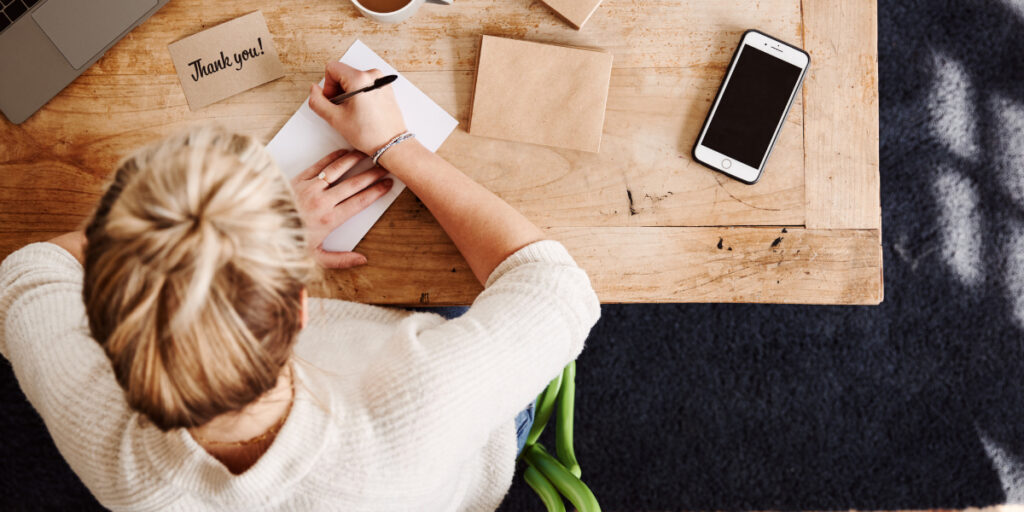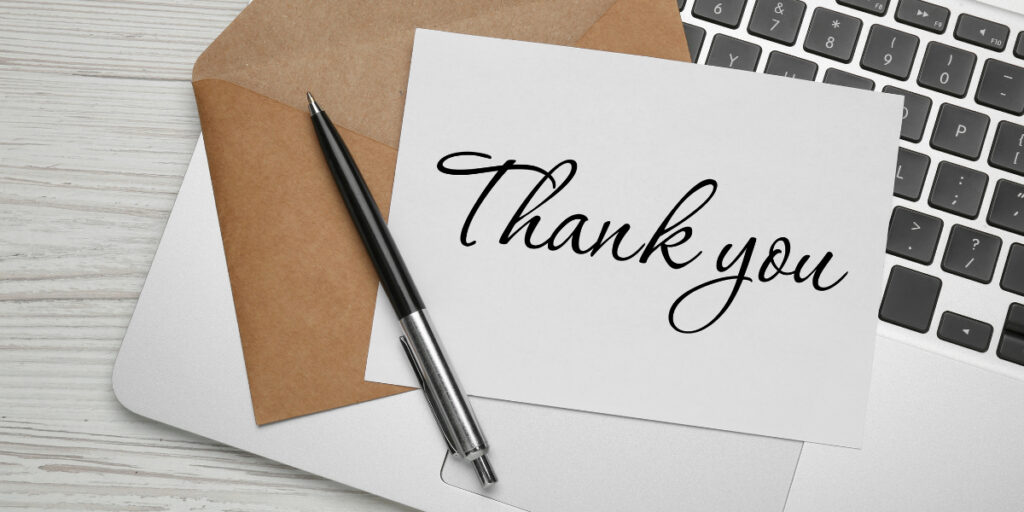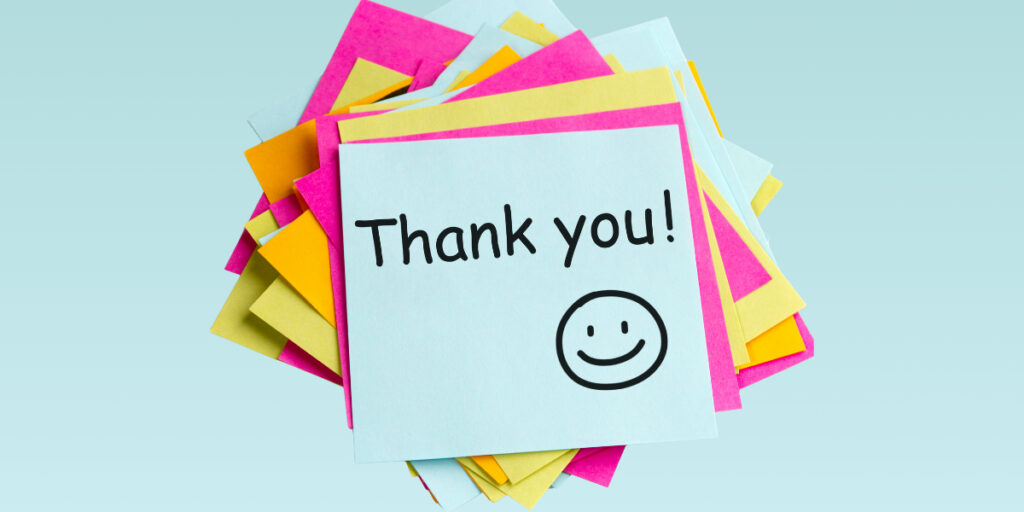
Pausing to write a thank you note feels rare, yet that small step can anchor connections and open doors. In the busy flow of emails and texts, a handwritten or well-crafted digital message really catches attention. Integrating professional thank you notes brings warmth and credibility to any relationship, making your words memorable rather than generic.
Expressing genuine appreciation isn’t just a formality—it’s a strategic move that shapes how others perceive you. Whether after a job interview, client meeting, or favor, articulating thoughtful thanks reinforces your professionalism and emotional intelligence. It’s about more than saying thanks; it’s about setting a tone that lingers in minds.
Throughout this article, you’ll discover concrete strategies, specific examples, and practical checklists for crafting thank you notes that truly stand out. Let’s explore what makes a thank you note exceptional and actionable, so your gratitude feels meaningful every time.
Crafting Specific Messages to Reflect Genuine Gratitude
When you tailor a professional thank you note, you show your recipient they matter as an individual. Starting with details about your interaction makes your appreciation feel personal and thoughtful rather than template-driven.
Consider referencing a unique point from your meeting or call. When sincerity shines through specificity, gratitude feels earned. A recipient who sees you remembered something unique will feel genuinely valued.
Using Language That Connects
Skip stiff corporate language and opt for everyday words that feel natural. “Thank you for the insight on the new project” reads as sincere and relatable compared to stilted expressions.
Analogies can help: just as recalling a favorite meal impresses a host, naming a detail from your discussion impresses your contact. This personal touch makes all the difference.
Try expressing thanks as if speaking to a mentor rather than a stranger. You might write, “I truly appreciated your feedback about my proposal; it gave me new direction.”
Short, Action-Oriented Examples
Choosing concise, active sentences ensures clarity. For instance, “Your advice on networking gave me practical steps I’ve already started using” communicates appreciation and action.
Another example: “Thanks so much for showing me the budget template. I’m implementing it this week.” Direct, specific notes assure the recipient you heard and valued their contribution.
When tailoring your language for professional thank you notes, focus on actions: what you did, what changed, and what you’ll pursue next. Honest progression matters more than lavish wording.
| Approach | Example Wording | When to Use | Takeaway |
|---|---|---|---|
| Reference Specific Event | “I appreciated our discussion about…” | After interviews, meetings, or mentorship | Makes your note memorable and sincere |
| Highlight Help Received | “Your guidance with the report streamlined my process.” | Following assistance or advice | Shows gratitude and learning |
| Mention Future Actions | “I’ll follow up as suggested next week.” | After actionable feedback | Demonstrates you listen and act |
| Express Impact | “Your support made a difference in the project’s outcome.” | Team-based achievements | Builds ongoing goodwill |
| Offer to Reciprocate | “Let me know if I can assist next time.” | Peer collaboration or support | Keeps the professional loop open |
Tuning Tone and Medium for Maximum Impact
Choosing the appropriate tone and delivery method increases the power of your thank you note. Matching your message to the recipient’s preferences ensures your gratitude comes across with the intended impact.
For instance, a handwritten card might suit a longtime mentor, while a concise, well-formatted email fits a client or manager. Select your channel intentionally, not just out of habit.
Nailing the Right Tone
Tone influences everything. A formal sign-off fits a new partner, while casual language matches internal colleagues. When in doubt, mirror the tone the recipient used in your last interaction.
- Mirror the recipient’s style to show attentiveness; echoing their tone feels authentic and considered.
- Start strong. Lead with gratitude, then include your unique detail before closing with a future-facing line.
- Watch for jargon—keep sentences plain to avoid misunderstandings or sounding aloof.
- Sign off appropriately. “Best regards” or “Sincerely” fit formal notes; “Thanks again” is suitable for peers.
- If you’re uncertain, choose clarity over creativity to ensure your point lands smoothly.
Delivering the right tone means your professional thank you notes come across as genuine, not forced—reinforcing your personal brand.
Choosing the Best Delivery Channel
Handwritten cards and emails each serve a different purpose. Match the medium to the context for optimal outcomes.
- Send handwritten notes for retirement, major milestones, or deeply personal mentorship to underscore your commitment.
- Pick email for interviews, formal business, or speedy thanks. Add a personal touch by referencing the event specifically.
- Consider professional messaging platforms for project-based teams to streamline quick gratitude exchanges.
- Mail cards following major contract signings to keep positive momentum with partners or vendors.
- Deliver your note promptly—within 24 to 48 hours—so your appreciation feels timely and genuine.
Adjusting the medium displays thoughtfulness, confirming the recipient and situation matter to you individually.
Choosing Meaningful Content Over Lengthy Sentiments
What you say in a professional thank you note counts far more than how much you say. Every word must contribute value, keeping your message tight and engaging. This approach shows you respect the recipient’s time.
If your note feels wordy or wanders off-topic, edit ruthlessly. A focused three sentences can outshine a page of generalities. Readers feel your intent and care when every line matters.
Targeting the Best Details
Name one action or outcome influenced by the person’s effort. For example, “Your introduction connected me to the right vendor; the event team’s response was swift, thanks to you.” This transforms praise into tangible impact.
Stick to the moment you shared or the difference they made, sharing specifics that only someone actually present could know. The result: a thank you note impossible to replicate by a stranger.
Wrap up with a forward-looking statement that keeps the relationship active: “I look forward to future collaborations,” or “Let’s stay in touch as new opportunities appear.”
Making Every Word Earn Its Place
Pretend every word is a brick in a foundation, and ask: does each support what I want to build? If not, remove and rebuild. When editing, read aloud and check for points that repeat or drift.
If you tend to write lengthy thank you notes, try a single-sentence draft first, e.g., “Your coaching helped me land the new client; I’m grateful.” Add only details that add new meaning, nothing filler.
This method ensures your professional thank you notes remain concise, actionable, and respectful of everyone’s time.
Timing Your Message for Lasting Effect
Sending your professional thank you notes promptly maximizes their power. Expressing gratitude within 24 to 48 hours is the gold standard for timeliness.
Quick follow-up shows you prioritize relationships. Delays may cause your message to feel obligatory or awkward. Strike while the interaction is fresh for best results.
Following Up After Job Interviews
After an interview, send your thank you note by end of day or next morning. For example, “Thank you for sharing details about your team culture—it increased my enthusiasm for the position.” This approach shows attention to detail and enthusiasm.
Interviewers remember candidates who send prompt, specific notes. If you wait too long, you risk blending in or seeming less interested.
Always finish with a reminder of your interest. “I look forward to the possibility of contributing to your team’s success.” It’s both courteous and strategic.
Marking Milestones Immediately
For mentorship, project completion, or contract signings, send notes as soon as possible. For example: “Your guidance throughout this project made a real difference. Thanks for your support as we completed this milestone together.”
This strengthens bonds at the high point of achievement, linking gratitude to a shared positive memory. The timing amplifies satisfaction for everyone involved.
When the moment feels significant, a prompt note deepens the impact. Make this a practice, not an exception.
Personalizing Every Word for a Lasting Impression
Recipients remember when thank you notes reflect who they are, not just what they did. Personalizing names, references, and greetings amplifies that connection.
It’s similar to writing a birthday card instead of a stock holiday message—people respond warmly to recognition of their unique contributions, not generic acknowledgment.
Referencing Shared Experiences
Pinpoint moments you shared, even subtly: “I enjoyed discussing your approach to problem-solving during lunch—it sparked new ideas for my workflow.” Situating gratitude in context provides authenticity.
It also reminds the recipient of what made your interaction mutually rewarding. Whether a joke, comment, or learning moment, tying your note to a shared event resonates.
Always bring in a personal element the recipient will recognize. It’s the simplest way to move beyond cookie-cutter thanks.
Celebrating the Recipient’s Strengths
Point out qualities the recipient demonstrated: “Your calm leadership set the tone for our project’s success.” This direct feedback, embedded in gratitude, reassures the recipient their unique strengths matter.
No need for flattery—keep it honest and direct. Personal affirmation frames your appreciation with respect.
The more individualized your compliment, the more meaningful your professional thank you notes become. Recipients treasure genuine validation.
Turning Notes into Relationship-Builders

Thank you notes are not just acts of courtesy—they’re relationship builders when used thoughtfully. Every message you send is another step in a long-term professional rapport.
Following up with professional thank you notes encourages ongoing dialogue rather than closing a conversation. The result can be a stronger network and deeper trust built over time.
Inviting Future Collaboration
Conclude notes with an open door: “If you see other ways I can help with your team, let me know.” This invitation shows readiness to participate beyond the moment.
Position thank you notes as conversations, not conclusions. Readers who see a willingness to collaborate may respond, reopening lines of communication naturally.
Always frame subsequent actions as mutual. It’s an ongoing partnership, not a transactional thank you.
Extending Value in Return
Add something of value in your note: “I found an article related to our discussion; let me know if it’s helpful.” This positions you as a resource, not merely a recipient.
Treat professional thank you notes like a two-way street. Acknowledge support and then offer tangible help or information whenever appropriate.
This mindset of reciprocity strengthens professional bonds and increases the likelihood of future exchanges.
Elevate Your Professional Thank You Notes for Meaningful Results
Creating memorable professional thank you notes comes down to specificity, personalization, timing, and thoughtful tone. Each component transforms your simple thanks into a catalyst for stronger professional ties.
When you target details, tune your language, and choose the ideal channel, you demonstrate respect for the recipient and your shared work. Appreciation expressed authentically fosters future opportunities and lasting connections.
As you embrace these habits, you’ll find your own voice and confidence in every note you send. Your gratitude will stand out and shape your professional relationships for years to come.
Frequently Asked Questions
How soon should I send a thank you note after a professional interaction?
Send your note within 24 to 48 hours for greatest impact. Promptness shows you respect the recipient’s time and value the interaction. Delays can make your gratitude feel less genuine or relevant.
What if I forgot to send a thank you note on time?
It’s still better to send a late note than none at all. Acknowledge the delay directly: “I apologize for my late reply, but I wanted to thank you for…” This honesty keeps your message authentic.
Should professional thank you notes always be handwritten?
Not always. Handwritten notes suit significant milestones or personal relationships. For interviews or business follow-ups, a well-crafted email is usually best. Consider your recipient’s preferences before deciding.
How personal is too personal for a thank you note?
Keep your message professional, but specific. Referring to shared experiences or results is safe. Avoid sharing unrelated details or crossing into overly personal territory, especially when you’re not well-acquainted.
Is it appropriate to offer help in a professional thank you note?
Yes, warmly. Offering help or resources demonstrates reciprocity and positions you as an engaged connection. Just make sure your offer is relevant and not burdensome to the recipient.

Email Etiquette: Communicate with Confidence
Want to stand out at work? Discover actionable email etiquette tips to write clearly, build rapport, and boost professionalism in every inbox.

